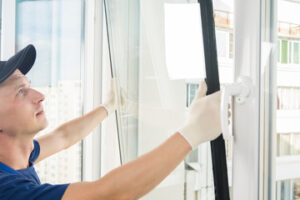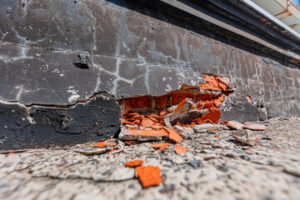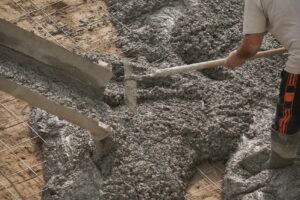If your windows are leaking, hard to open and close, or just look old, replacement windows can make a big difference. The right windows enhance your home’s appearance and improve its energy efficiency.

Look for a company that offers a wide selection of window types and customization options. Also find out whether they offer a lifetime warranty that’s transferable if you sell your home. Contact Your Home Exterior Solutions for professional help.
When it comes to your home’s windows, you have plenty of options to consider. Window replacement can help address a number of issues like sagging frames, drafts and high energy bills. It’s important to choose the right materials for your project based on the needs of your space, your design preferences and your budget.
There are several different types of materials used in the manufacture of replacement windows, each with their own pros and cons. Some of the most common materials include vinyl, fiberglass and wood. The material you choose will influence how your new replacement windows look and perform.
Vinyl windows are a popular option due to their affordability, energy efficiency and durability. They’re easy to maintain and have a long lifespan of 15-20 years. If you’re looking for a more stylish alternative to vinyl, consider clad-wood windows. These combine the aesthetics of wood with the benefits of vinyl.
Aluminum windows are another alternative to vinyl. They’re lightweight and can be customized with many color and hardware options. However, they do not offer the same energy-efficiency benefits as vinyl or wood windows. Aluminum also conducts heat, which can cause it to expand and contract in extreme temperatures, leading to leaks and other problems.
Fiberglass is another durable and affordable option for replacement windows. It’s also a great insulator, keeping your home comfortable throughout the year. In addition, it’s resistant to fading and moisture. It’s also easy to clean and provides a more attractive alternative to traditional wooden windows.
Wood windows are an elegant choice that can add a luxurious feel to your home. They’re available in a variety of finishes and styles and provide the best natural insulation. Wood is also easy to customize with paint, stain and other coatings to match your home’s style.
It’s important to keep in mind that wood windows require more maintenance than other types of replacement windows. They must be stained, painted and caulked on a regular basis. However, they offer superior insulation and can last a lifetime with proper care. If you’re considering wood replacement windows, it’s essential to choose a quality manufacturer that uses only premium grade hardwood.
Styles
Window replacement is a big project and there are many different options to choose from. It’s important to understand what each type of window offers and how they can help you elevate your home’s curb appeal, energy efficiency and security.
Full frame window replacement removes the existing windows and doors down to the studs and then installs new replacement windows into the old openings. This is usually done when the existing frames are damaged or if you’re remodeling your home and changing window locations.
If you are doing a full frame window replacement, it is often best to match the style of new windows to the original style of your home’s architecture. This ensures the windows will blend seamlessly and look as if they were designed to be there all along.
There are many different window styles to choose from including double and single-hung, sliding, casement, awning, bay and bow windows. Some types of windows can open while others don’t, and you’ll want to consider how you’ll use the space before selecting a window style.
Awning and casement windows open by swinging out on hinges like a door. These are popular choices for homes located in rainy or windy climates because they allow for great ventilation. They are also a good choice for hard-to-reach areas where you don’t want to sacrifice your view.
Arched and clerestory windows add an elegant and unique design element to homes both old and new. Located on the top portion of high walls, these windows allow light to flood into rooms while creating more wall space at eye level for displays like artwork or curios.
Bay and bow windows are made up of multiple window panes at 25- to 45-degree angles, creating a beautiful focal point that can be turned into a cozy reading nook. They also let in more natural light than a standard window and can be paired with double or casement windows as end vents. If you’re looking for something truly unique, there are also custom window styles that can be created to fit the nooks and crannies of your home. These include circular, hexagonal, octagonal and arched windows that can be shaped to create stunning custom designs.
Insulation
The right kind of insulation helps keep drafts and high energy bills at bay. But it can be expensive to install the right amount of insulation for replacement windows.
The solution is to use a spray foam product made specifically for window insulation. It’s a low-expanding, low-pressure polyurethane foam that’s available at many home improvement centers. When used correctly, it creates a tight seal around the frame and glass of a window. This can significantly cut heating and cooling costs, according to the Department of Energy.
To install the spray foam, remove the trim around the window and cut the foam to fit snugly in the corners and along the top and bottom edges of the frame. Make sure the window is closed before using the spray foam to prevent air from blowing out or in around the frame and glass. The foam needs time to cure, but can be painted or stained once it’s dry.
Another way to insulate replacement windows is with plastic film. DIY home bodies and TikTokers such as Shauna of homediydiary are fans of this easy-to-install option, which comes in a kit that includes a roll of plastic film, adhesive tape and a hair dryer for applying gentle heat to bond the film to the tape and shrink it to form a tight seal. The film is rated to reduce air leakage by up to 35 percent, but only if installed properly.
You can also use a simple weather strip seal to stop air leaks around existing windows and doors. These seals are available at most home improvement stores and are made of EPDM, foam or felt stripping that you can cut to size to fit the gaps around your windows. These seals are inexpensive to buy and install, but they will need to be replaced regularly to maintain their effectiveness.
For a more permanent and longer-lasting solution, you can try fiberglass insulation. This type of insulation works best for a new window installation since the material is more durable than vinyl and can hold up to more severe weather conditions. Fiberglass is also easier to repair if damage occurs. If you opt for this material, it will be necessary to hire a professional installer because the job requires more labor and equipment than vinyl.
Budget
The biggest factor in window replacement cost is the type of windows homeowners choose. Homeowners can save money by buying their windows in bulk, as many companies offer discounts for larger orders. Some companies also provide financing options to help make the cost more manageable for homeowners.
The style of window also affects costs. Bay windows, which feature flat windows set in an angled frame, usually cost more than traditional sliding or picture windows. They add a dramatic look to the home, but they are not as energy-efficient as other window types.
When choosing a company to install window replacement, ask for references from previous clients and request pictures of completed projects. Check whether the company disposes of old windows and cleans up after each job. Also, find out if the company offers any warranties on their work.
Homeowners can further reduce window replacement cost by limiting the number of extra features they opt for. Integrated grills, between-glass shades and trim and hardware supplied by the window company can drive up the cost. These extras are not necessary, and homeowners may want to consider negotiating for a lower price.
Another way to cut costs on window replacement is to invest in additional insulation, which can reduce heating and cooling bills. However, homeowners should keep in mind that more heat enters and escapes through attic hatches, recessed lighting fixtures, fireplaces and other penetrations in the home’s envelope than through windows.
In addition to saving on energy costs, replacing outdated windows can protect a home from more serious damage. Cracked and damaged windows allow water and cold air to seep into the home, which can lead to mold, rot and insect infestations. Moreover, cracked and broken windows are easy for intruders to break into.
Window replacement is a major investment, but it can help homeowners protect their homes from damage and increase their property values. The right window company can offer a wide selection of window frames, styles and sizes that fit any budget.








